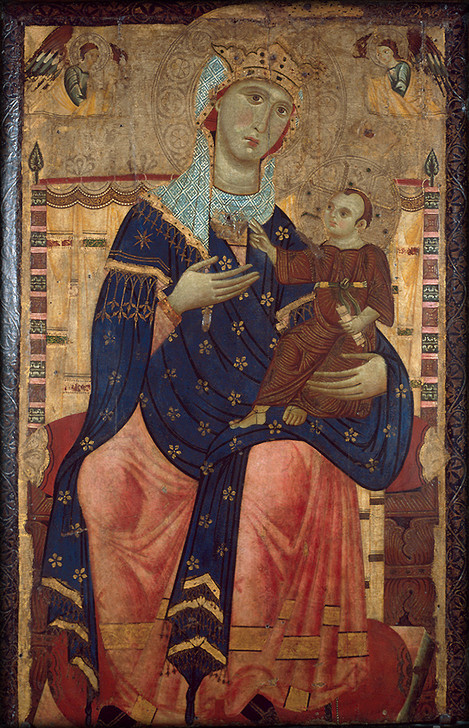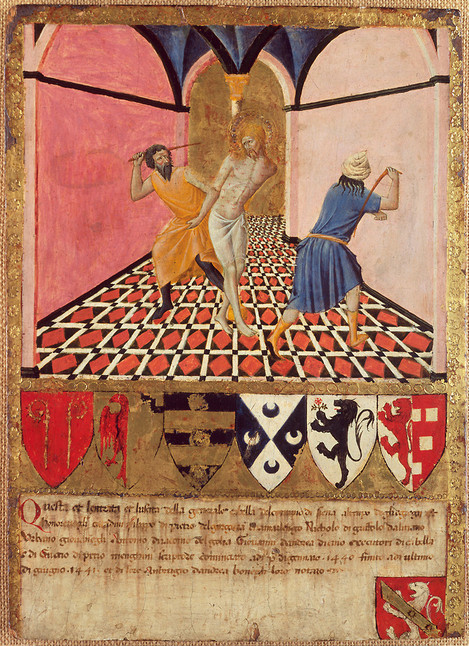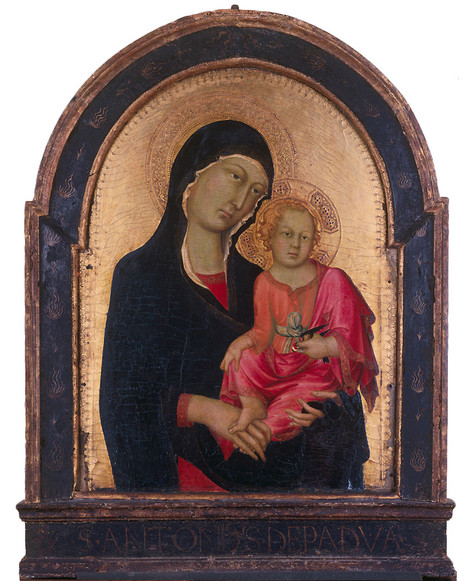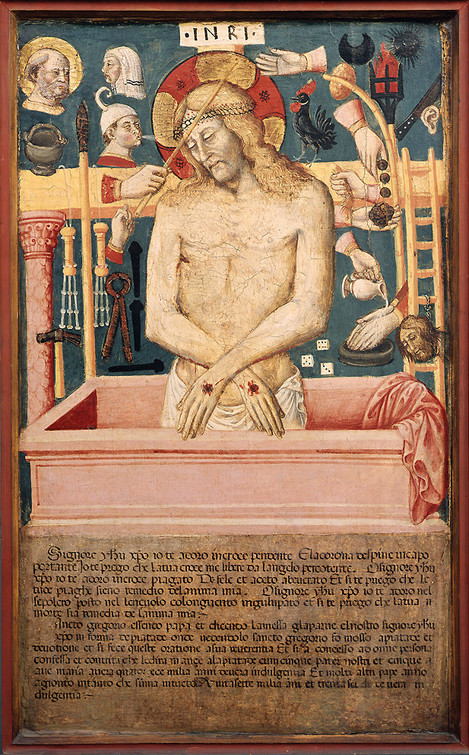THE INVENTION OF ART
In gallery no 1 you can see the oldest paintings in the collection – older even than the concept of “art”. What does that mean? Included here are paintings that were never conceived of as artworks, but were firmly anchored in religious life as cult objects. Which is not to say that these paintings of Jesus and Mary, and of male and female saints, were any the less important ormeaningful – in fact, it’s more the opposite case: they represented the depicted saint quasi in person. They received prayers and bestowed grace, such as by healing mind, body, and soul. Some of them were also carried through the streets in processions. In short: they were actually used for religious purposes. One of the paintings in this room even contains a set of instructions. In return for prayers and confessions, this “indulgence picture” promised the rueful sinner an appreciably shorter stay in Purgatory after his or her death – and thus a speedier route to Paradise.
Some of the Italian paintings exhibited here have their roots in the icons of Byzantium (formerly Constantinople, now Istanbul), which exerted a particularly strong influence on Italy. Urban culture, which was quick to develop in Italy, encouraged an open approach to images. Which meant that a “Scourging of Christ” could adorn the files used by amunicipal tax inspector! As Christian imagery spread into worldly contexts, new values were brought into play. The religious and spiritual values embodied by the gold background were replaced by artistic values in the modern sense, such as by the particular skill of some artists for rendering people and spaces in a lifelike way. The cult object became a window onto the world – a decisive step towards art in the present sense.
 Luccan, c. 1250 – 1260: Enthroned Madonna with Child. Canvas mounted on poplar, 104 x 63 cm. Acquired in 1968 as a loan from the Neven DuMont family, Cologne. Inv. no. WRM Dep. 0319. Photo: Rheinisches Bildarchiv Köln
Luccan, c. 1250 – 1260: Enthroned Madonna with Child. Canvas mounted on poplar, 104 x 63 cm. Acquired in 1968 as a loan from the Neven DuMont family, Cologne. Inv. no. WRM Dep. 0319. Photo: Rheinisches Bildarchiv Köln Master of the Osservanza (workshop), active in Siena c. 1440 – c. 1480: Scouring of Christ, 1441. Poplar, 45 x 30.5 cm. Acquired in 1968 as a loan from the Neven DuMont family, Cologne. Inv. no. WRM Dep. 0321. Photo: Rheinisches Bildarchiv Köln
Master of the Osservanza (workshop), active in Siena c. 1440 – c. 1480: Scouring of Christ, 1441. Poplar, 45 x 30.5 cm. Acquired in 1968 as a loan from the Neven DuMont family, Cologne. Inv. no. WRM Dep. 0321. Photo: Rheinisches Bildarchiv Köln Simone Martini (Siena c. 1284 – 1344 Avignon): Mary with the Child, c. 1316 – 1317. Poplar, 79.5 x 57 cm. Acquired in 1961 as a gift from the State of North Rhine-Westphalia. WRM 0880. Photo: Rheinisches Bildarchiv Köln
Simone Martini (Siena c. 1284 – 1344 Avignon): Mary with the Child, c. 1316 – 1317. Poplar, 79.5 x 57 cm. Acquired in 1961 as a gift from the State of North Rhine-Westphalia. WRM 0880. Photo: Rheinisches Bildarchiv Köln Umbria, final quarter of the 15th century: Christ as the Man of Sorrows, with the 'Arma Christi'. Poplar, 81.5 x 50 cm. Acquired in 1930 as transferal from the Museum Schnütgen. WRM 0744. Photo: Rheinisches Bildarchiv Köln
Umbria, final quarter of the 15th century: Christ as the Man of Sorrows, with the 'Arma Christi'. Poplar, 81.5 x 50 cm. Acquired in 1930 as transferal from the Museum Schnütgen. WRM 0744. Photo: Rheinisches Bildarchiv Köln


